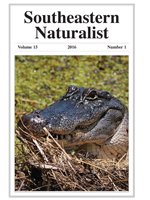Food plots are commonly planted for Odocoileus virginianus (White-tailed Deer) in the eastern US, because they are known to benefit this species. We hypothesized that food plots may also provide early-successional habitat for nongame species, such as songbirds, in areas where it is normally lacking. Thus, we evaluated songbird use of food plots planted with Trifolium spp. (perennial clovers) in the northern and southern Appalachian Mountains by comparing avian species richness and abundance within plots, along their edges, and in the adjacent forest. During the breeding season on northern sites, there was no difference in avian richness or abundance among the plots, their edges, or adjacent forest. However, both species richness and abundance were greater along plot edges during breeding season on southern sites. Species richness was also greater along plot edges for a subset of southern sites sampled during winter. Thus, food plots within southern Appalachian hardwood forests enhanced habitat conditions (as indexed by use) for songbirds, including several species that are classified as declining. Population losses of those species may be due to otherwise limited availability of early successional habitat within these systems.
How to translate text using browser tools
1 March 2016
Songbird Use of White-Tailed Deer (Odocoileus virginianus) Food Plots in Appalachian Hardwood Forests
Wilson E. Ricks,
Robert J. Cooper,
William D. Gulsby,
Karl V. Miller
ACCESS THE FULL ARTICLE

Southeastern Naturalist
Vol. 15 • No. 1
March 2016
Vol. 15 • No. 1
March 2016




